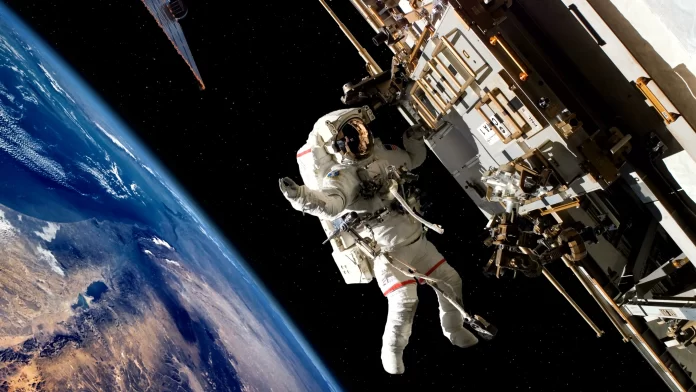A colossal remnant weighing nearly 3 tons, discarded from the International Space Station (ISS), is hurtling towards Earth in anticipation of its atmospheric plunge. The discarded object, Exposed Pallet 9 (EP9), was jettisoned from the space station in March 2021, marking it as the largest object ever deliberately released into space from the ISS. Routine disposal of used or unneeded equipment in this manner is a customary practice aboard the ISS, with the objects typically disintegrating harmlessly upon re-entry into Earth’s atmosphere.
Ahead of EP9’s anticipated re-entry, the Federal Office for Civil Protection and Disaster Relief, National Warning Center 1 in Bonn, Germany, issued precautionary alerts. A translated statement from the center warns of a larger space object expected to re-enter the Earth’s atmosphere between March 8 and March 9, potentially causing luminous phenomena or sonic booms. The probability of debris impacting Germany is deemed low, but ongoing updates will be provided if the risk escalates.
Astronomer Jonathan McDowell from the Harvard–Smithsonian Center for Astrophysics shared via social media that the battery-containing object is projected to re-enter Earth’s atmosphere between 7:30 a.m. ET on March 9 and 3:30 a.m. ET on the same day.
In anticipation of the re-entry event, satellite tracker Marco Langbroek captured footage of the battery as it traversed over the Netherlands, sharing the video on social media.
EP9, loaded with old Nickel-Hydrogen batteries, was delivered to the ISS via Japan’s HTV-9 (Kountori 9) on May 20, 2020. This payload carried six Lithium-Ion battery Orbital Replacement Units (ORUs), which were utilized to replace existing ISS Nickel-Hydrogen batteries during astronaut spacewalks. NASA estimates EP9’s re-entry into Earth’s atmosphere within the next two to four years following its jettisoning.



